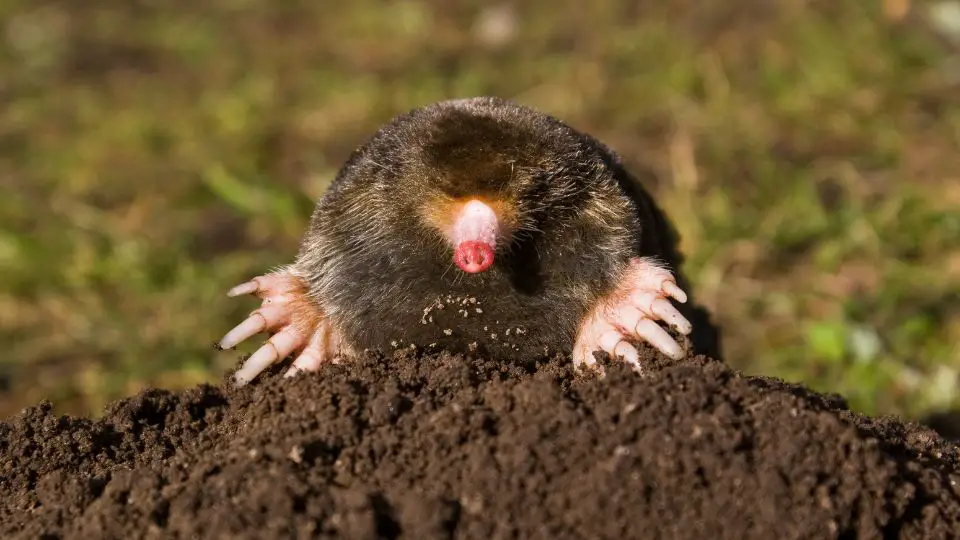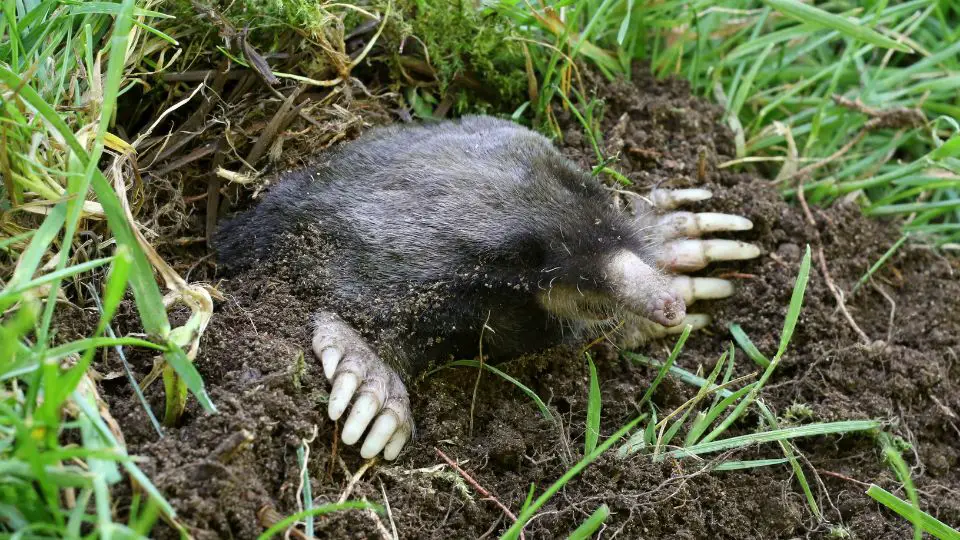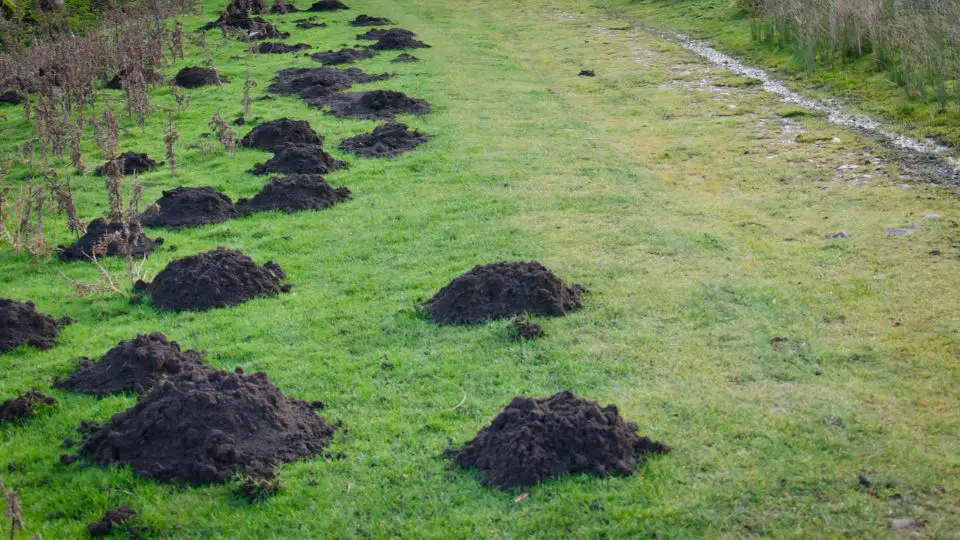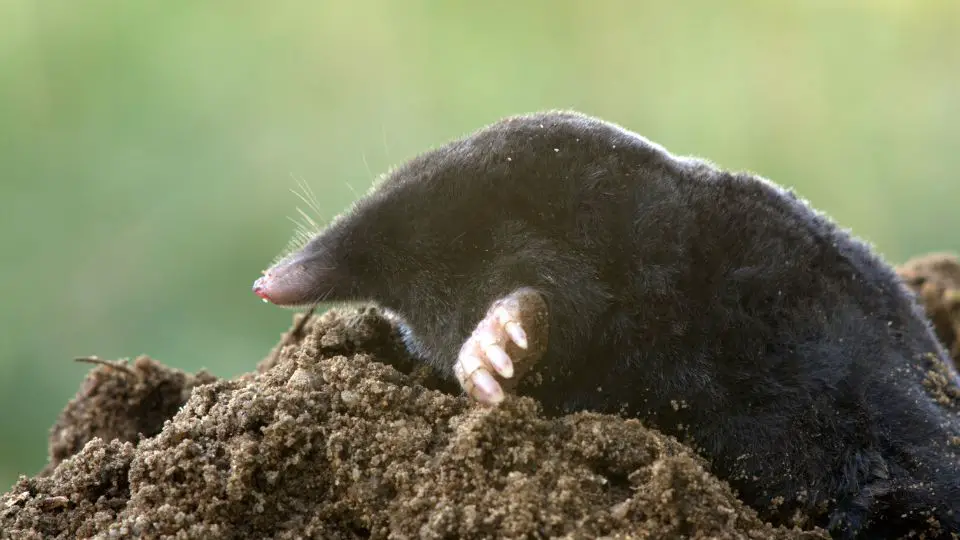Moles can pose health risks to both humans and dogs. In rare instances, they can transmit rabies, a virus that attacks the nervous system and is fatal if left untreated. Humans and dogs may contract rabies if they are bitten by a rabid animal, including a mole. Moles have dangerous insect parasites that are likely to pass from ticks or fleas to pets or humans.
Ticks are hosts for an array of diseases like tularemia, anaplasmosis, Rocky Mountain Spotted Fever, and Lyme disease.
While moles are not a major threat to humans or dogs, they can carry diseases that can be harmful or even fatal. If you notice mole infestation, it is best to avoid contact with it and contact local animal control or wildlife rehabilitation center for guidance and assistance.
Table of Contents
Are Moles Dangerous to Humans?
Moles are small, burrowing mammals that are found all over the world. While most moles are harmless to humans, some species can pose a threat.
The most dangerous moles are those that carry the rabies virus. Rabies is a serious disease that can attack the nervous system. It can be passed to humans through bites or scratches from infected animals.
If you are scratched or suffer a bite by a mole, it’s essential to seek medical attention immediately, as treatment must be given within 24 hours to be effective.
Other dangerous moles include the giant gerbil of Africa and the European mole. These creatures have large teeth and powerful claws that they use to dig burrows. They can also deliver painful bites if they feel threatened.
When you come into contact with a mole, caution is important. If the animal appears sick or behaves strangely, avoid contact and call your local animal control agency for assistance.

Are Moles Dangerous to Pets?
Moles may be smaller, but they can cause significant problems for your pets. While moles are not typically dangerous to animals, they can carry diseases that can make your pet sick.
They can also damage your home and yard by digging tunnels and burrowing holes. If you have a mole problem on your property, it’s important to take steps to deal with them before they cause any harm to your beloved pet.
The safest way to do this is to contact a professional pest control company specializing in mole removal. They will be able to safely and effectively remove the moles from your property, that way you can know your pet is safe and your home is protected.
Moles can carry a variety of diseases that can be harmful to your pet.
Some of the most common include:
- Rabies
- This viral disease attacks the nervous system and is fatal if left untreated. Moles are known to carry rabies, so it’s important to keep your pet away from them.
- Leptospirosis
- This bacterial infection affects the liver and kidneys and can be deadly if not treated promptly. Moles can often be carriers of this disease.
- Ringworm
- This fungal infection causes a distinctive ring-shaped rash on the skin. It is highly contagious and can indeed be passed from animals to humans, so it’s important to keep your pet away from moles if they have it.
In addition to carrying diseases, moles can also be harmful to your home and yard. They dig mole tunnels and burrow holes that can damage your home’s foundation or tear up your lawn.
If you have small pets on your property, take steps to get rid of moles before they cause them any harm.
One way is by setting up mole traps right in their tunnel systems.
Taking steps to protect your pet from moles is important for their health and safety. If you have moles on your property, be sure to contact a professional pest control company before they cause any harm.

Do Moles Bite?
Moles are often thought of as harmless creatures that mind their own business. If you have a mole in your yard or garden, it is important to be aware that it could bite if it feels cornered or threatened.
Mole bites usually only occur when the mole is handled roughly or if it is startled.
If you are careful around moles and do not try to handle them, the chances of being bitten are very low.
If you are bitten by a mole, know that it is vital to clean the wound immediately and seek medical attention if it looks like the bite is infected.
What Happens If a Mole Bites You?
In most cases, a mole bite will only cause a tiny puncture wound that will heal on its own within a few days. However, there is in fact a small risk of infection if the wound is not kept clean and dry.
See your doctor for treatment if you develop any signs of infection, such as redness, swelling, or pus.
In very rare cases, a mole bite can transmit rabies to humans. This is most likely to occur if the mole is infected with the virus. Symptoms of rabies include fever, headache, muscle pain, and weakness.
If you think you may have been exposed to rabies, see your doctor immediately.
You can treat mole bites at home by washing the wound with soap and water. Apply an antibiotic ointment to help prevent or treat any infection, and cover the wound with a sterile bandage.
Be certain to keep the wound very clean and dry until it heals. If you have any questions or concerns, talk to your doctor.

Do Moles Carry Diseases?
Moles are generally considered harmless, but there is some evidence that they may carry certain diseases.
Moles carry rabies, leptospirosis, Lyme disease, West Nile virus, encephalitis, and meningitis. Although these diseases are rarer, they can still pose a severe threat to human health.
Can You Touch a Mole?
It is prudent to avoid touching a mole. If you must touch a mole, wash your hands thoroughly afterward.
What about a molehill? An old saying advises not to make a mountain out of a molehill.
If you have a molehill on your property, you may be wondering if you should touch it or not. For health and safety reasons, it’s certainly better to avoid it. The answer also depends on several factors, including the type of molehill and your local laws.

